
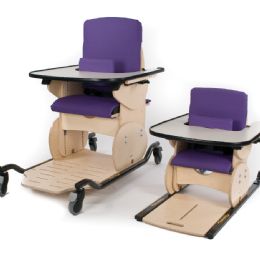
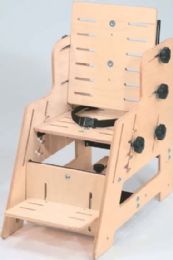

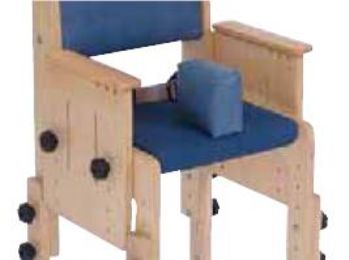
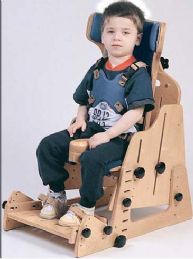
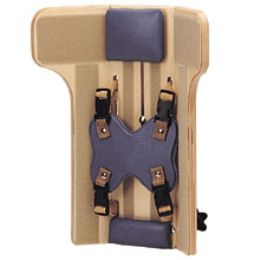
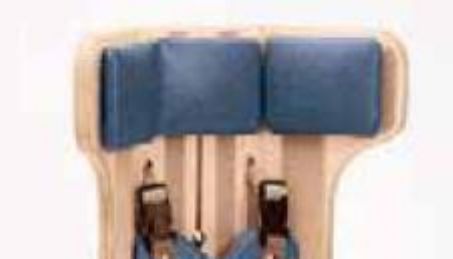
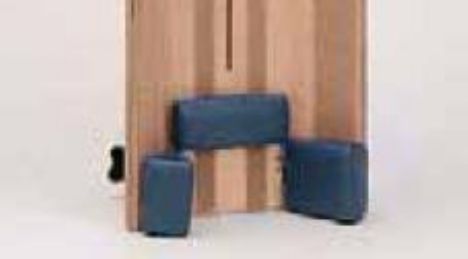
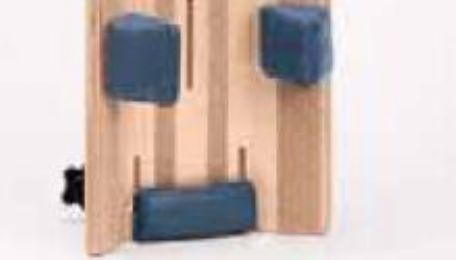
What is Adaptive Seating?
Many children with special needs may require additional seating support and positioning assistance, and selecting the right seating equipment can make a world of difference for these special kids. While adaptive seating covers a wide range of specially designed positioners, chairs and sitters to enhance comfort, health and independence, most of the seating options in this category also highlight active or dynamic seating designs.
Dynamic seating configurations allow or even encourage the young user to move while seated in the chair. This active sitting and its inherent movement and flexibility is more beneficial for the human body. As a field of study interrelated with ergonomics, active sitting is gaining in popularity within the pediatric and adult rehabilitation world, and of greatly growing interest to those who work with children and adults in wheelchairs.
Adaptive and active seating options often allow the children who use them to interact with their peers at eye level, and for parents, teachers, therapists and caregivers to attend to their feeding, cleaning or other needs with comfort and ease. Most importantly, adaptive chairs encourage proper posture and positioning, which results in improved physical and mental health along with enhanced learning skills.
Adaptive chairs additionally offer children in wheelchairs an alternative place to sit. With their excellent adjustability and special options, most adaptive chairs conform to the unique child’s individual requirements. Whether you choose a chair for comfort and relaxation, or one designed for the classroom and focusing attention and learning, there are many formats that will more specifically accommodate your own special child’s needs.
Who can Benefit from Using an Adaptive Chair?
Whether we are able-bodied or experience disabilities, our human bodies were not meant to spend long hours sitting in a constrained or restrictive posture. Rigid, static sitting options often cause or contribute to a plethora of health problems, especially the longer we engage in those sitting behaviors.
Children with physical challenges and children in wheelchairs may not be able to readily change posture and positioning on their own. Not only are their bodies constrained by a regular chair or wheelchair which can lead to discomfort, physical strain and fatigue, but this static body posture also often interferes with the ability to perform any functional movement tasks and activities.
Active, adaptive seating options allow freedom of movement within the seating device, resulting in enhanced dynamic posture and positioning. Because it is such a crucial time of cognitive and physical development, childhood is the most important period of life to institute interventions that can positively impact the rest of their lives. Adaptive seating choices that accommodate their individual requirements and enable adjustable, active positioning control and function are one of the most important aspects of early intervention programs.
Many children with special needs may benefit from using adaptive, active seating systems. These include children on the autism spectrum and those with spinal injuries, multiple sclerosis, cerebral palsy, traumatic brain injury, hypertonia, hypotonia, spasticity, developmental delays, ADHD and a host of other disorders, diseases and health challenges. Research has also indicated that active seating improves focus and clarity via sensory and vestibular input, so this type of adaptive seating can also be of great benefit to children with sensory processing disorder (SPD) and vestibular imbalances.
How do I Choose the Right Adaptive Chair for My Child?
While dynamic adaptive chairs are available in a vast assortment of styles, sizes and formats, they all generally enable the young user to remain properly positioned during and after moving while seated, and are also active enough to prevent damaging and painful shear along with the adverse effects of prolonged immobility. Active seating chairs can help to reduce devastating health issues whether a child has low or high muscle tone, and assist in improving postural control and function.
With adaptive seating designs that include early intervention, preschool, primary and intermediate, there are numerous choices available to match up with your child’s unique requirements at any age. There are two basic seating formats in the adaptive chairs category; dynamic chairs for learning and school, and dynamic chairs for relaxation and home. Although both formats can certainly be used interchangeably among home, school, rehabilitation and therapy centers dependent upon your child’s unique requirements.
Dynamic Adaptive Seating for Learning and School
Highlighting a wide variety of adjustable features, active adaptive chairs often offer the capability to “grow with your child”. Seats on these chairs can often be angled and adjusted in both height and depth which also translates to easier transfers as well. Positioning belts, straps and harnesses are included on some models for added security and posturing assistance.
Most of these dynamic seating choices can be widely customized for one single user, or for a variety of users within the same facility. Because of this adaptability, these special chairs can accommodate young users who experience mild, moderate or severe physical challenges. Pelvic, trunk and head supports keep your child in proper position, and adduction and abduction devices can also be added. Customize foot rests, leg rests, armrests and headrests to fulfill your child’s specifications.
Some active adaptive chairs are actually configured to allow the child to semi-kneel forward on the construction. This type helps to inhibit lower extremity extension while keeping the trunk of the body erect and is highly recommended for children with tight hamstring muscles, or ankle and foot contractions. Other types feature a specially angled anterior seat that enhances the back to hip angle and gives an anterior tilt for the pelvis position. This design additionally makes transfers and sit-to-stand activities easier.
Adaptive bolster chairs also offer dynamic sitting, often used to keep children from crossing or adducting their legs while sitting. The flatter design of the adaptive bolster prevents rolling off to one side or the other, a common problem with a regular round bolster chair. Adaptive seating inserts are also available to help further customize an adaptive or regular chair, making it more ergonomic, active and able to offer proper positioning support.
Dynamic Adaptive Seating for Relaxation and Home
As one of the earliest manifestations of active sitting, the common rocking chair allows backward and forward swaying motion that is intrinsically calming. Taken to the next level, dynamic adaptive chairs that inspire relaxation and inner peace have become more of a rocking chair mixed with a comfy recliner. Yet it is still the back and forth swaying motion that delivers the active sitting dynamics.
These adaptive rocker chairs additionally incorporate specific fabrics and foam materials of varying density to more specifically accommodate the unique needs of each young user. Often based on their clientele’s responses to the fabrics, definitive textures and colors of these chairs are often selected by therapists and parents of special needs children. The deep, cushy ‘V’ design of the seat offers properly positioned support without the need for other positioning restraints, belts or harnesses.
Adaptive rocker chairs give every child their own place to ‘chill out’, and are an especially wonderful seating alternative for kids in wheelchairs. Because they are such viable stress relievers, they may also enhance learning for many young users, and become a comfy place to do schoolwork as well. They include ottomans to support the legs and encourage healthy circulation, reducing swelling and edema and properly positioning lower extremities. The ottomans also provide a space for parents, caregivers and therapists to more easily attend to the child.
Rehabmart is proud to offer a comprehensive selection of superior quality adaptive chairs from well-known and innovative manufacturers that include TherAdapt and Freedom Concepts.
Hulet Smith, OT
Rehabmart Co-Founder & CEO
ck